How Much Does Quality Score Affect Google Ad Costs?

The Google Ads platform is a complicated beast, but it's not really that difficult to understand once you get under the hood and really start looking at the inner mechanics.
One of those inner mechanics is Quality Score. Quality Score is a semi-complex metric that impacts pretty much everything about your Google Ads account, so it's well worth trying to learn what it means, keeping an eye on your own score, and optimizing your ads to boost your score as much as possible.
What Is Quality Score
Quality Score is a metric Google measures and maintains for every Google Ads account. It's a numerical value between 1 and 10, with 10 being the best. A higher Quality Score is good, while a lower score is bad.
There's one thing that Google tries to make clear, but a lot of marketers don't mention this when they write about Quality Score, so I'm going to go ahead and put it front and center.
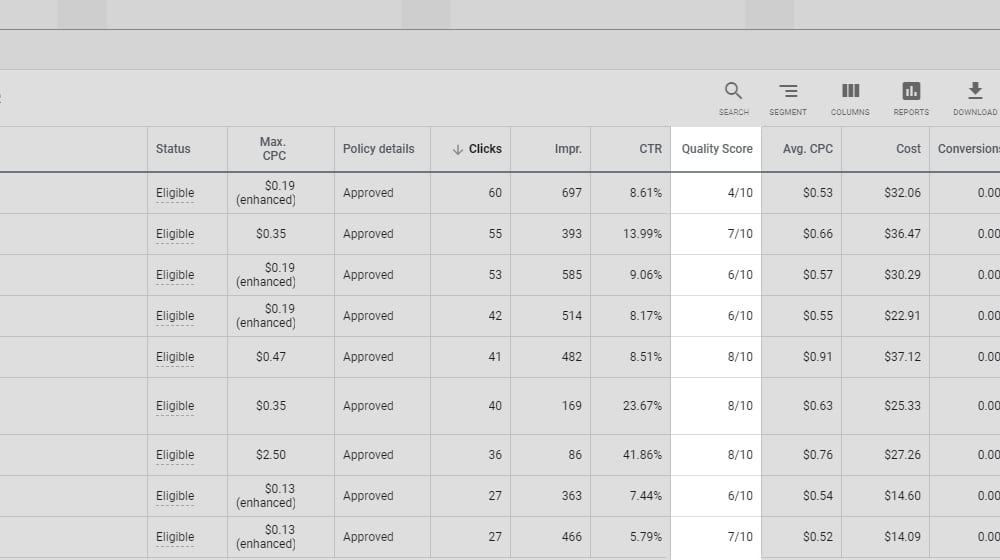
Quality Score itself does not impact your ads.
Wait, what? So what's the point then?
Quality Score is a monitoring metric. It's like calculating your conversion rate from your ads. Your conversion rate doesn't impact your ads, but the factors that go into calculating it might, and the conversion rate reading can help you make changes to other elements of your marketing to improve it.
Quality Score is basically just a way of monitoring several different factors, all of which have an impact on your ads. Each of those individual metrics can be tweaked and improved, which will improve your overall Quality Score, which is an indicator that you're going to have more success with your ads.
So what goes into your Quality Score? There are five different metrics that flow into it.
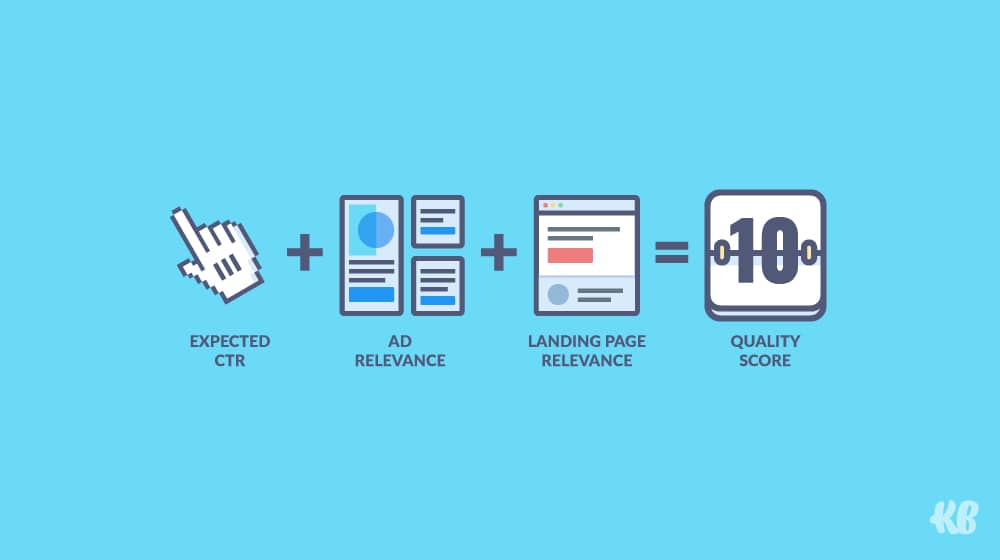
First, you have your ad click-through rate. The CTR of your ads is obviously a big indicator of their success. The more compelling an ad is, the more clicks it will get, and the more chances you get to convert users who land on your pages.
Second, you have your keyword relevance to your ads. This is Google's way of telling you to run more ads with narrower focuses. Basically, when you have a group of keywords in an ad or ad group, each of those keywords is judged for its relevance based on the ad copy and the landing page copy. The more relevant the keywords, the better your Quality Score.
Third, you have your landing page experience. A better landing page is a better experience for users who click on ads. If your landing page has a loud autoplay video and a broken script and a dozen different links for users to click, it's not a great experience and a lot of users are going to bounce. If your landing page is narrow, focused on the keyword and subject from the ads, and has a clear goal for your users, it's a better page and Google will rate it better.
Fourth, you have the relevance of your ad text. When a user performs a Google search, they want relevant content. You can target a query with completely irrelevant ad copy if you want, but it'll be hard and expensive to get seen and you'll have no ad clicks. A highly relevant and compelling ad copy will help on its own, and by increasing your click-through rate.
Finally, the fifth metric is your historical performance with Google Ads. The better your ads have been in the past, the better your Quality Score will be moving forward. If you run some experiments and tank your ad performance, your Quality Score will reflect that.
All five of these together are analyzed and given some kind of score in the background, which we cannot see, unfortunately. All Google gives us is a "below/above/average" reading for each factor. Whatever those scores are, are then calculated together with varying weights, based on an algorithm Google doesn't tell us. The final result of that calculation, rounded to the nearest whole number, is your Quality Score.
It's also worth mentioning that your Quality Score is calculated for each ad, rather than account-wide. You can see your overall account average Quality Score, but what's really important is the Quality Score for each individual ad.
What Quality Score Impacts
As I mentioned above, your Quality Score itself doesn't directly impact anything. However, when you have a higher Quality Score, it comes with some benefits. It's very simple, really; a higher Quality Score gives you a higher ad rank and lower costs in the ad auction. A lower Quality Score means you'll be paying more of the same ad position someone else is gunning for with a better score.
The real question is: how much does quality core impact your costs? Because if we're talking about a 2% change between 1 and 10, that's not really something worth caring about, right? I mean, sure, a 2% reduction in costs overall can add up, but I can almost guarantee you that there are better things you can do than spend your time worrying about it.
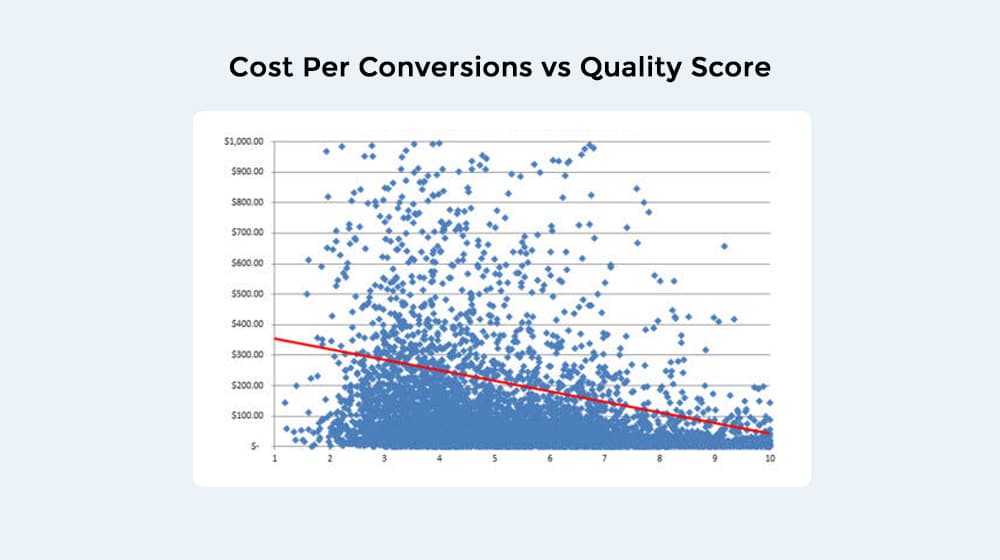
Fortunately, WordStream studied a huge amount of ads they manage and were able to chart out just how much of an impact Quality Score has on your costs. It's not minimal.
The "average" Google Ads Quality Score is 5. If you consider the ad costs at QS5 to be a baseline, here's how things stack up.
- A QS of 6 will cost on average 16.7% less for ads.
- A QS of 7 will cost on average 28.6% less for ads.
- A QS of 8 will cost on average 37.5% less for ads.
- A QS of 9 will cost on average 44.2% less for ads.
- A QS of 10 will cost on average 50% less for ads.
Boosting your Quality Score, then, has a pretty big impact on ad costs. Imagine if you could, with a few relatively simple changes, cut your cost per click in half. That's what you're looking at if you go from Quality Score 5 to Quality Score 10.
What about the other direction, though? How much worse does it get? Answer: a lot worse.
- A QS of 4 will cost on average 25% more for ads.
- A QS of 3 will cost on average 67.3% more for ads.
- A QS of 2 will cost on average 150% more for ads.
- A QS of 1 will cost on average 400% more for ads.
That's right: if you're at the very bottom, you're paying four times as much for ads as someone just halfway up the list, and five times more than someone with the best Quality Score.
Obviously, this is a pretty big deal.
How to Reduce Costs and Boost Quality Score
We know the five factors that go into your Quality Score, and we know a better Quality Score helps reduce ad costs, so it should be easy to extrapolate that into ways you can improve your Quality Score. Here's what I've put together.
First, remember that click-through rate is subjective. While a lot of the tips I'm giving you will improve your click-through rate, what constitutes a "good" click-through rate will vary from ad to ad. For one keyword, a CTR of 5% will be good enough to get you a Quality Score of 8. For another keyword, a CTR of 15% might not be good enough to get you above a Quality Score of 5. It's a matter of context and competition.
Also, remember that Google still uses click-through rate for ads that haven't run yet. They calculate what they call an expected click-through rate based on average performance for similar ads, ads you've run in the past, and a few other factors. Once you run the ad for a while, they will adjust to the actual click-through rate and adjust your Quality Score accordingly.
Bear in mind that every tip I give you is aimed at improving relevance, improving the user experience, or getting a higher click-through rate. Those are your best ways to get a higher Quality Score.
Break ads up into narrower, more focused groups based on keyword and intent. There's some evidence to suggest that the "keyword to ad ratio" is important here. Ads with more keywords have a lower chance of being tightly relevant. Splitting ads with a ton of keywords into several ads with narrow groups of keywords is generally going to allow you to reach more targeted audiences more easily.
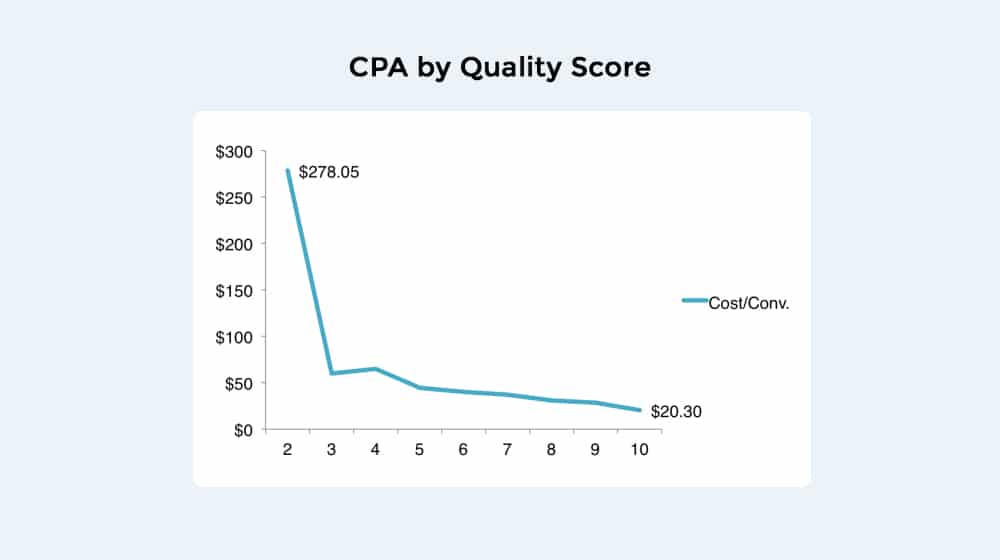
Perform more keyword research to discover more highly relevant keywords to target. I know keyword research can be tedious – trust me, I've been doing it for years – but it's essential for good ad targeting. Normally I'm all about finding cheap or free tools and methods you can use to perform any given marketing task, but this is one area where it's definitely worthwhile to use the expensive tools if you can afford them. I also recommend reading some of the more detailed guides on the subject out there, like Backlinko's definitive guide to keyword research.
Refine and split test your ad copy to find ad copy that is highly relevant and compelling to searchers. One of the best tools you have in your arsenal for optimizing ads is split testing. Creating copies of ads and running them with slight variations to see which has the best score is a great idea. The only downside is if you make a mistake and create a variation that plummets in Quality Score, you'll need to pause it quickly and focus on the others to avoid hurting your account overall.
Writing highly relevant ad copy is generally a matter of knowing exactly what keywords you're targeting and what users are looking for when they search for those keywords. You want to keep user intent in mind, use keywords in your copy whenever possible, and try to present a compelling offer that makes users want to click your ad rather than whatever organic search results they see below it.
Create more landing pages for your ads, to have higher focused, higher quality landing pages for ad groups. This one is all about ad relevance. I know it's tempting to use one core landing page for as much as you can, but managing a bunch of different landing pages with subtle or not-so-subtle variations can be a dramatic improvement.
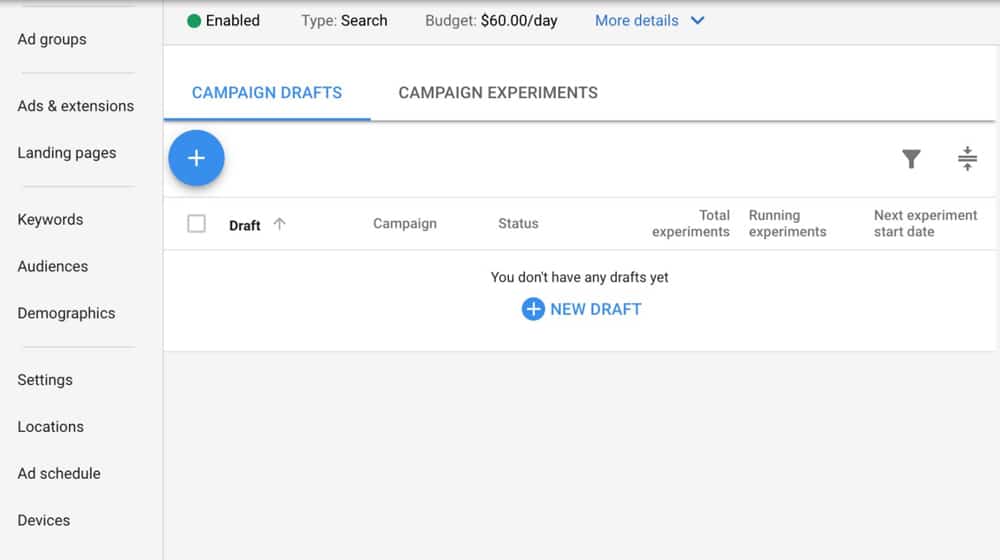
A lot goes into landing page optimization, more than you might think at first glance. A detailed guide like this one can give you a good place to start. Now, not every tip to improve your landing pages will improve your Quality Score. However, if you're boosting your conversion rate, cart value, or subscriber numbers, that's just as good.
Research and identify negative keywords you can use to cut out less relevant traffic. Negative keywords are one of those tools that you might not think about right away, but when you learn how to use them, it's eye-opening. Keep an eye on the queries users are using to find your ads, and figure out if there are specific keywords you can blacklist to keep your ads from showing up for those queries when they're irrelevant. This means your ads only show up when they're relevant, and will thus have higher relevance scores and higher click-through rates.
Negative keywords can be anything from "free" to a competitor's name to file types and more. If you're selling a book, you don't want to run ads for the people who are looking to pirate it or download a .epub file or whatever, right? They aren't going to click your ad because they don't want to pay for it. That's the kind of query that seems relevant but should be blacklisted.
Consider a tool that helps identify low-quality keywords you can remove. For example, there's a script on this page that you can run through your Google Ads interface. The script will pull data on your ads, categorize it, cross-check keywords with Quality Score, and email you a list of all of your lowest quality keywords. You can then use this list to determine which ads you should change, which keywords you should remove or pause, and how you can tweak other ads to improve.

Pause, optimize, or remove low-Quality Score ads. This one stands to reason. Remember that one of the five factors that go into your Quality Score is your overall performance with Google Ads. If you keep bad ads running, they're going to drag down your overall Quality Score across the board. By pausing and improving or removing your lowest quality ads, you boost your overall score.
When Quality Score Isn't the Priority
Now, Quality Score is important, but it's not necessarily the thing you should be focusing on when you're working on improving your ads. It sure seems like it's the overall most important metric, but that's only after you've dealt with some other common issues you may be experiencing.
The primary problem you might find is that Quality Score cares about click-through rate and landing page experience, but it doesn't care at all about low-quality clicks. You can have a very high click rate ad that results in zero conversions, and it might not be because of the landing page experience. Even something like a poor offer can throw a wrench into the works. You can see an example analysis of this problem here.
My advice is to look at a reading of your Quality Score across all of your ads. If you're at or above 5 for everything, go ahead and start looking into ways to improve it, even if it's just up by one point. If you have ads below 5, though, it might be worth looking for other issues that are stopping those ads from performing well. This might be a disconnect between keywords and copy, or between copy and landing page, or it might just be a lack of negative keywords. Regardless, there are ways to improve your score that don't require focusing on the Quality Score number directly.
Have you had any issues with your Quality Scores in the past? Do you have a great Quality Score across the board? Tell me about it in the comments below!





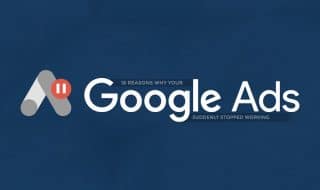

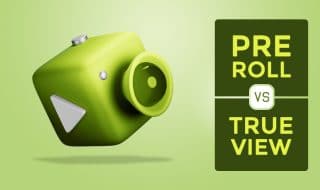


September 17, 2020
Wow, I didn't know my low quality score meant I was paying more. I always just ignored it. I'll definitely start paying more attention to it. Thanks for shedding some light on this.
September 19, 2020
Hey Stephen! Oh wow, yes definitely don't ignore it - if your score says "Below Average" you're certainly paying more per click than if it were "Average" or higher. If you're able to score a 9 or a 10 you could be paying as much as 50% less per click. Read through these tips and try working up a few variations of your landing pages to bring those scores up!
December 14, 2020
Oh wow, had no idea quality score was tied to how much my ads cost.
I am having a hard time with keywords, to be honest, it might be the reason why I only got 6 QS. Do you have any recommendations on what tools I can use to help me with this?
December 18, 2020
Hi Lia! A 6/10 quality score is pretty good, to be honest.
The best way is to cast a wider net with keywords.
I think the best tools to use would be some keyword research tools like WordStream or UberSuggest.
Also, make sure that your landing pages are reflective of the keywords you're paying for. If they're not relevant, your quality score will be lower.
May 04, 2022
My quality score plateaued at 6/10. I've been trying to increase it to no avail. Should I be worried? How can I point out what's causing this?
May 05, 2022
Hey Amy!
It may be that you need to add more content to the page that is a better fit for that specific keyword.
You could try using some TF*IDF tools like Clearscope or MarketMuse to find other similar phrases that search engines expect to see on a search for this query.
Or, it could be a poorly-optimized title that isn't getting many clicks, or a slow-loading page. It's hard to say without seeing your landing page and your ad.
Google will tell you how well you score in each of the three categories (CTR, relevance, experience). How do you score in each category?
This will help you hone in on which category needs the most improvement.
April 29, 2021
Good info, I always wondered what it meant. I thought it was the quality of my ad and keywords, not having anything to do with my site. Oops.
April 30, 2021
Hey, you're not the only one! I'm glad it was informative, thanks for stopping by 🙂